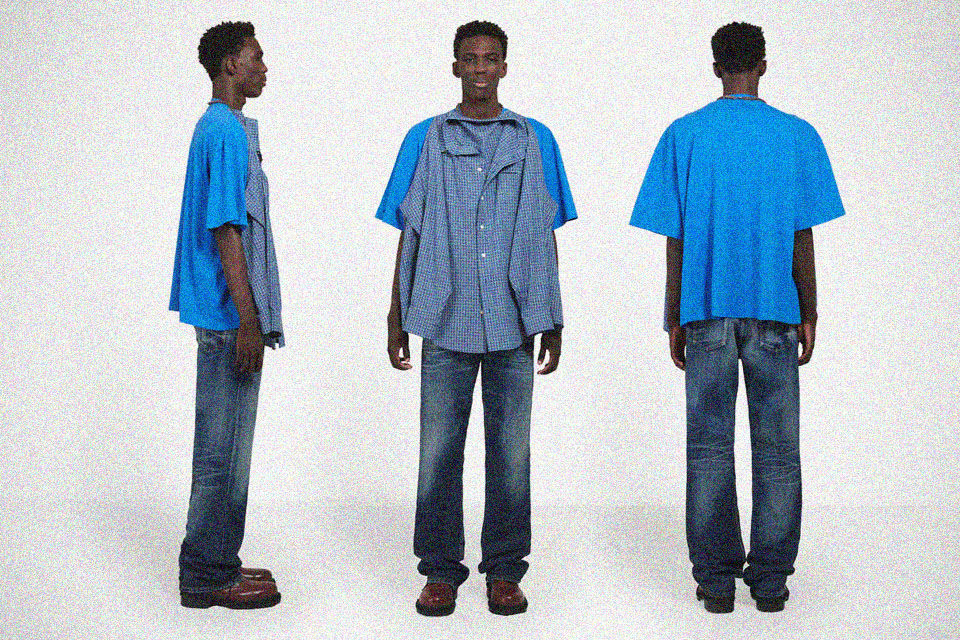How to create your own luxury clothing brand.
- THE VEIL OF HUMANITY

- Sep 25, 2019
- 3 min read
Updated: May 28, 2020
luxury /ˈlʌkʃ(ə)ri/
noun a state of great comfort or elegance, especially when involving great expense.

t-shirt shirt, Balenciaga, (2018)
proof people will buy anything.
Research cited from websites:
MartinRoll(2018)
- a clear plan to identify a niche customer segment and emphasize the brand’s symbolic value
- offering high-quality products with a contemporary twist.
- In addition, another challenge that luxury brand managers need to deeply consider is how to make digital and technology a key business enabler.
- The purchase decisions of luxury consumers go much more beyond just financial extravagance; but instead allows them to pursue a passion or associate themselves with the brand’s image and aspiration.
- In such a digitalized and commoditized world, brands need to be able to express the same emotion that can resonate with luxury consumers. Digital disruption and emotional engagement, although seemingly opposite, can actually be combined to enable companies to reap the most out of their luxury branding efforts.
6 Secrets of Brands That Cater to the Rich and Famous
Learn
1) They sell a lifestyle.
2) They rely on quality over quantity.
3) They let their products do the selling.
4) They make buying the product part of the experience.
5) They create a passionate community of buyers.
6) They use scarcity to their advantage.
Dan Scalco (2015)
What is a luxury brand?
According to THAT Agency, five factors clearly define a luxury brand:
Price
Quality
Design
Meaning
Rarity
Service
What makes luxury brands different
In the realm of consumer goods, what separates Louis Vuitton from Walmart is obvious. However, the difference between Louis Vuitton and Hermès is subtle (hint: the more expensive brand isn’t always the most luxurious).
Keeping with our example of Louis Vuitton vs. Hermès, there are many reasons why LV is a better example of luxury branding at its finest:
The company invests in collaboration with a variety of artists without diluting the brand.
Regardless of the artist collaboration or Creative Director at the helm, LV maintains a consistent brand identity.
The parent company of Louis Vuitton, LVMH, also owns a slew of other luxury brands, so they have a ton of experience in this area.
Getting started with luxury brand building
Get specific about who you’re targeting. There’s a niche market that cares about what your brand is about. Figure out exactly who they are, and focus on one persona when you’re getting started. After your brand is well-established, broaden your definition of an ideal customer.
Do things differently. Differentiation is a key focus for emerging brands. Companies like LUSH Cosmetics focus on handmade makeup to get noticed. This sets LUSH miles apart from big box retailers like Sephora.
Become a status symbol. Focus on how influencers in a specific niche are using your product or service. By creating the perception that only the most discerning buy into your brand, everyone in your target market will, too.
Create exclusivity. New luxury brands can tap into exclusivity by offering special perks to existing customers. High price tags and scarcity are other ways to employ this strategy. Aston Martin combined a high price tag with scarcity when it created the Aston Martin One-77. The British car maker made a whopping total of 77 cars and sold them at $1.8M dollars each.
Consistently delivery on your brand promises. The bar for luxury brands is high. You’ll need to raise your game and keep your brand promises in every single customer interaction.
All research will further be considered within the upcoming development of my brand. I will also be following the research on how to start up a fashion brand.
Main things to do:
- create exclusively
- brand identity
- embrace scarcity
- create an experience
sources:



Comments